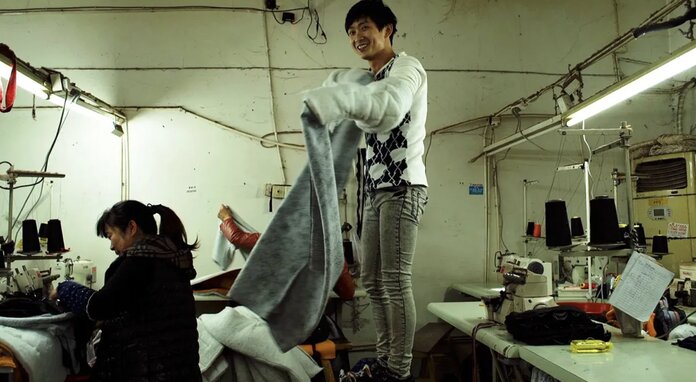
Youth (Spring)
Studio: Icarus Films
Wang Bing
Oct 03, 2023
Web Exclusive
![]()
Wang Bing’s three-and-a-half-hour opus, Youth (Spring), is an effective yet sometimes meandering look at Chinese factory workers.
Shot over five years (2014-2019), Youth documents the lives of young immigrant workers, usually in their late teens or early 20s, at factories that produce children’s clothes. Throughout the film, the director relies on long takes and little editing to capture the grueling, repetitive nature of the workers’ jobs. He crosscuts this footage with footage of the workers outside their immediate work–whether resting in the factory dorms, walking around the industrial district, or talking to coworkers about personal problems.
For the first half of the film, Bing sacrifices a clear narrative for a fragmentary one, to show the complex problems that the young workers face in their daily lives. To achieve this, the director quickly moves from factory to factory, constantly introducing audiences to new subjects whose lives are different from others in some ways, but identical in others.
In the film’s second half, a stricter narrative develops as factory workers fight to earn better wages, voicing their concerns about unfair pricing to their boss. Bing’s transition into this storyline feels natural and warranted. By first exploring the rhythm of the workers’ lives, and how their entire lives must revolve around their jobs, viewers gain a visual understanding of how they are grossly being underpaid and how the money they receive isn’t just for them, but for the families that they’ve had to leave behind. In this vein, this strict narrative effectively shows the result of people understanding that they’re worth more than the products they make or the money they make. It’s a moving realization, which works because of Bing’s ability to approach his subjects in a gentle and understanding manner.
As a result, even though the three-and-a-half-hour runtime is daunting, it’s necessary to communicate the film’s complex ideas. Bing also navigates the runtime effectively, using the repetitiveness of footage to explain to audiences that they’re only seeing a tiny fraction of a worker’s day, let alone their life. At times, particularly during the first half, the plot is a little too unfocused, especially as the director quickly abandons certain subjects and their stories to move on to his next cases. This nomadic tactic pays off in the second half, after the central narrative shapes, but during the film’s first two hours, it makes the documentary feel unfulfilling.
Youth is mostly observational. Bing often keeps the camera stationary to show life as it is, but there are many moments in the film when the director and the subjects want audiences to know this is a filmed affair. This usually manifests when the director follows subjects around using handheld footage, causing a shaky camera effect that reinforces that he’s always there, behind the camera. At times, subjects even break the fourth wall, telling Bing what to film or how to capture the best shot. This style works for the film and against it. The fourth wall breaks further seal the connection between Bing and his subjects, exhibiting the level of trust that subjects gave the director to capture their lives. At the same time, though, sometimes it makes the filmic medium feel too evident and, as a result, a little forced.
Author rating: 7/10
Current Issue

Issue #72
Apr 19, 2024 Issue #72 - The ‘90s Issue with The Cardigans and Thurston Moore
Most Recent
- 12 Best Songs of the Week: Charly Bliss, Jessica Pratt, The WAEVE, Hamish Hawk, and More (News) —
- Thomas Powers (of The Naked & Famous) Shares New Single, “Empty Voices” feat. Julien Baker (News) —
- illuminati hotties Shares Video for New Song “Can’t Be Still” and Announces New Tour Dates (News) —
- Jon Hopkins Announces New Album, Shares Video for New Song “RITUAL (evocation)” (News) —
- Why Bonnie Shares Video for New Song “Dotted Line” (News) —

Comments
Submit your comment
There are no comments for this entry yet.